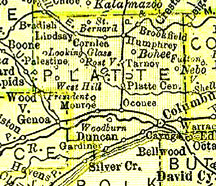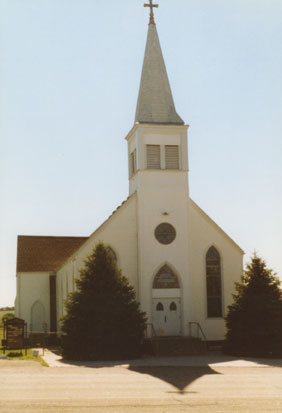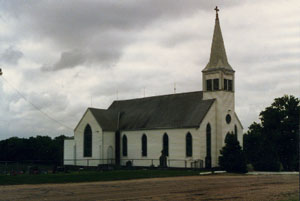

Past and Present of Platte County Nebraska submitters Ted and Carole Miller
Platte County, Nebraska Sherri Brakenhoff, the Platte County Coordinator
http://www.rootsweb.com/~neplatte/
(Some comments are combined with information from the "Past and Present of Platte County listed above.)
There are several stories about why and when the Hellbusch family came to America. Because many records were destroyed during the war in Germany, there are items that we can not verify. When you read this, please understand there may be some discrepancies that come about because some dates can not be verified. Passenger lists of immigrants are not always accurate because of transcribing errors, etc.
According to the majority of information we have found, Johann Heinrich was the first Hellbusch that came to America and settled in Nebraska. Johann Heinrich was born in Germany, November 1824, and arrived by ship in 1869, along with his wife and children. He settled in Platte County, Nebraska. This location has been verified and is accurate. The area was known as "Oldenbusch". It is recorded on some older road maps. It is a matter of record, the name came from the combination of Oldenburg (Germany) and Hellbusch.
The census was taken in 1870. This was all written by hand and there can be errors in the recording of these names. Many did not speak English and would not be able to tell the census taker how to "spell" the name.
It is my belief that Johann Heinrich Hellbusch is recorded as "Herrbush". The dates and names of his children are correct. Elaine Ashby has copies of the original census.
Johann shows his occupation as farmer, age 45, from Prussia, value of personal items - $500. At this time no real estate value is listed. Listed as living at home are Anna, his wife, age 23, Herman, age 8 and Carl, age 6. These ages do coincide with Johann's children.
On the second page of the census as show "Fred Herbuch" is listed. I feel this is Johann Heinrich's son Fred. His age is listed as 18, as a stock Herder.
On the third page Henry is listed as "Henry Herbush" and is shown living with a large family named "Sushi" also from Prussia. It must have been a prosperous family as the real estate value is listed as $5,000 and the personal value as $1,000. Henry is shown as age 12, occupation - herder. It does indicate that he attended school during the previous year.
Lina is shown on the fourth page as living with a family by the name of "Wurteman". Her age is 14.
(Elaine Ashby has copies of the census page.)
Living conditions were not the best but they did not, as one could suspect, enter a strange, nor hostile environment. They re-assembled their village communities and continued their old social ties. A sense of community prevailed and continued in America and was carefully nurtured for safety and security. This was very important as starting a new life was demanding and by itself presented an enormous burden. Living quarters had to be erected, land had to be made arable and prepared for cultivation.
The area north of Columbus where this German community settled was vast prairie grass as far as you could see. The sod had to be turned to be made arable and get it ready for cultivation. Living quarters had to be erected. Tools were scarce, implements more so. A relative or neighbor helped through these many rough spots. They were not alone and this had to relieve many anxieties.
In general, it is quite true that influence of the Church in the personal life of the new immigrants was not any less than it had been in the homeland. Quite soon after arrival one would engage with his neighbors in the building of a House of God; engaging the services of a Pastor in many cases followed soon. In the case of Oldenbusch, St. John's Lutheran Church was established (More about that later.).
The lifestyles and customs left behind had not left their importance for the émigrés; they would soon be picked up without much difficulty. Most remarkable is the preservation of their dialect within an English speaking populace. In many families the German language was preserved throughout a number of decades, not "Hoch Deutsch" to be sure, but "Platt Deutsch". If later generations studied German in school that would have to be "Hoch Deutsch".
One fact seems to stand out: The concept of America being a Melting Pot, which robs every immigrant of his ethnic and cultural individuality in order to make him a "typical Yankee", is patently false. Certainly in the rural areas the cultural and religious values of their homeland were carefully nurtured, not simply for sentimental or memorial purposes, but as solid standards in daily life.
The arrival of the railroad to Platte County was a big boost for Columbus and the surrounding Platte County.

